Finally! An all-new Big Twin engine from Harley-Davidson! A bit late, but worth the wait! Since Harley doesn’t do this every day (or every decade for that matter) this is a Big Deal Big Twin!
For the purpose of this introductory explanation of what it is and what to expect from it, I thought I’d simply interpret and expand on, as best I’m able, the information H-D has provided on this powerplant, point by point, and explore how The Motor Company goes about delivering on the slogan for the Milwaukee-Eight (M-8): “Stronger, cooler, with more comfort and style.”

Introducing brand new Big Twin engines and associated mechanical entities, like primary drives, clutches, transmissions and such, on the bread-and butter-bikes only, is a bold move by The Motor Company. Face it, Touring models are the backbone of Harley’s model lineup, so to place this new engine exclusively in them—first—is a gauntlet thrown in the face of those naysayers who blather on about never buying the first year of anything. They say it’s risky business until the bugs are worked out. Harley is betting the bugs have been exterminated in advance. It’s a safe bet!

The major engineering decisions that make this engine new (and vastly improved) amount to these: twin-plug four-valve heads, single camshaft, gear-driven counter balancer, and… wait for it… crankcase venting to the transmission. There’s more, but mostly in detailed design, intended to enhance those main features.

The first 4-valve Harley heads since the board-track racers of the old days got those extra valves and those twin plugs because the powerplant has to be emissions compliant world-wide. It meets the toughest of those, “Euro 4,” with no trouble. That’s more than you could say for any previous Big Twin, but only tells half the story. What’s best about the four-valve, twin-plug, pent-roof combustion chamber can be summed up in one word… potential. The level of efficiency in this configuration is such that the engine makes its power in a very low state of tune. Killing a lot of birds with this rock is easy. Lower emissions, improved power delivery everywhere in the rpm range, fuel economy, and lower operating temperatures, to name a few. Those who want to turn up the heat (in both senses of the word) and use some of that latent potential are in luck! (We’ll examine that subject in depth in next month’s Motorhead Memo.)

The decision to use a single cam, regardless of how retro it appears on the surface, is actually the best way forward for this new four-valve, pushrod layout. Quieter because there are fewer parts thrashing around under the cam cover and because of gentler ramps, lobes and lifts… compared to camshafts that came before on Harley Big Twins. Because the flow in the heads is greater (by 50 percent, H-D says), massive amounts of lift are unnecessary. As is radical timing. Might take some adjustment in thinking for folks who intend to hot-rod these engines but it amounts to less wear and tear on the entire valve train as well as better results from milder cams with “specs” worlds apart from the “traditional.”

Smoother V-twins are the reason for counter-balancers in the first place. The Twin Cam “B” got ’em in a chain-driven form to tame vibes in the solid-mount Softail chassis, but it was a piece of add-on engineering…and not without niggling faults. The Motor Company knew they could do better and now they have. This is a definite design improvement, if for no other reason than it cuts reciprocating weight, simplifies and reduces parts count, is quieter and shall not fail or flail at high rpm (although for a Harley that’s 5500–6000 rpm!). Then there’s this: The Motor Company can obviously, easily, change the balance factor to suit different applications.

The thing is, speaking of applications, why put this counter-balanced engine into a rubber-mount chassis? It seems fair to say, that after the M-8 engine has spread to and through the entire Big Twin lineup for a couple of years, we just might see some new chassis to hold it. What if The Motor Company has an improved Touring chassis in the works? Or, maybe the day will come when all “long” primary models go away in favor of short primary redo’s of the Softail and Dyna “platforms?” And, dare I hope, if the Dyna goes away, it might it be replaced with a versatile, smooth, great-handling, light Big Twin model, that combines the best of the Dyna and the FXR… only goes both one better? Change the balance factor to suit a solid mount frame and away we go!

Anyone tired of so-called “oil carryover” can rejoice in the fact that oil no longer goes anywhere near the air cleaner. Instead, it is routed into a cavity in the sump underneath the transmission. May not sound like much, but it’s a kind of quiet revolution in that age-old bugaboo of Big V-twins with small crankcases: oil control. The massive amounts of air and oil churning within is caused by the huffing and puffing of pistons pumping up and down, creating first pressure then vacuum inside. These pulses need to be vented properly. In the past it has been done directly from the cases, then up through the cylinder heads. Never, since 1936, has it been completely tamed. The proof has been found inside air cleaners for decades. After hard running, oil, in theory separated from air in advance, has still managed to make the occasional mess where you don’t want it… all along the right side of the motorcycle. No more… period! An under-appreciated improvement that can not be overestimated.


These features are the foundation upon which Harley-Davidson has erected its latest and greatest Big Twin engine. But there’s more to it than that. More than meets the eye. So much more, we can’t get to all of it in one issue. (So, the second part of this dissection of details… will be in the next issue of THUNDER PRESS.)
OK, next we’ll get to the “bottom” of the new Milwaukee-Eight. In other words—to be continued…


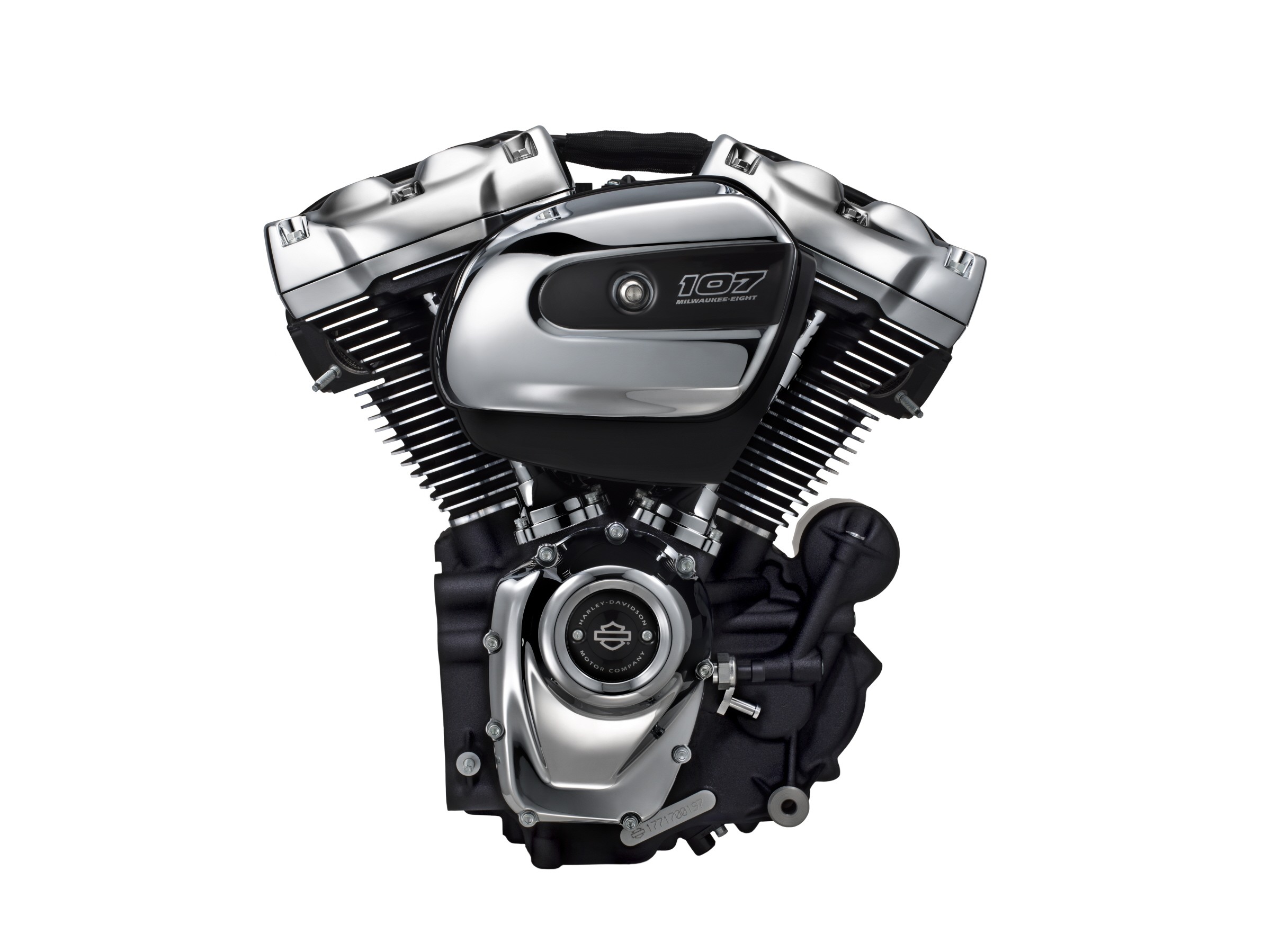
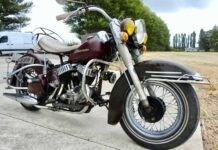

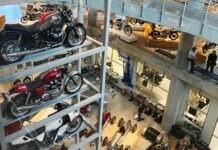
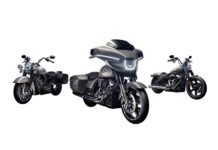
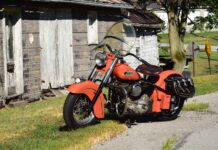
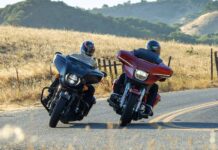










I bought a 2017 limited three weeks ago this Friday, have put on 1350 miles ,I had a 2013 before but have been riding HD since 1969 ,I can say WOW ! they hit a home run with this new bike ,in the past I always did the pipes cam/ cams and head mods and air/ fuel mods , I can say at this time will not be modifing this engine or the pipes he runs real good the way she left the factory ,but some my want to change the mufflers ,at 65 now the stock ones will been fine
So what happens past 65mph ?
I think he meant 65 years old ?
DEC 22, 2016 Just purchesed an M-8. love the torque and throttle response. Real smoothe, its about time we hav a smoothe ride in the touring models. thanks Harley. Norman
i do think power upgrades will be minimal as your warranty will be quickly removed!! with issues occurring on new bikes most will be smart to wait, but those with deep pockets could care less, + it “seems” mopower will be made easily as the aftermarket embraces the new engine as it always does with harleys
Currently have 2005 XL Sportster custom period modified just a little. Looking to upgrade to a 107 period for many obvious facts period money issues oldies but we’ll find a way I think that bike defines me I seen it on display in the walkie Wisconsin Southside Harley Davidson sales right by the museum period live about 2 miles away from Main plant in Milwaukee Wisconsin, one I looked at had everything on it 21800, pretty expensive but it looked worth every penny, and test drove perfectly better than I could have ever imagined, will need a bike for travel in far. Much respect Harley Davidson Corporation. Anything I can do to help lower the price or whatever have communication with many hundreds of thousands through moderation and my own sites. Thank you
I bought the new 2017 SGS. She sure has torque. The new suspension makes it handle like a sports car in the corners but it’s no Cadillac as far as ride goes. I’m 220 lbs and I have the rear suspention set on 0 just so it rides a bit like a touring bike should. If your looking for a cushy touring bike you better buy the ultra classic. Now with regards to no oil by the air cleaner ….. wrong!!! I went on my first trip last week and it puked oil all over the right side of the engine and on my pipes and seat. I’m Canadian so we pay dearly for these bikes. I have $45,000 invested in this bike with a stage one , bars and grips. There is nothing more disappointing then spending that kind of money only to smell oil burning on your pipes. I rode a Kawasaki Vulcan for 10 years and put on 82,000 kms with no oil in the air cleaner. To this day that bike runs like new. It’s maybe not as pretty as the Harley but it sure is engineered better. Harley you need to do better than this!!!!
The worst decision of my life …
… for a motorcycle.
Last fall, I decided to buy a new Roadglide Special 2017 M8. Sorry, but what a mistake. Of course, the motorcycle handles very well with a lot of power (stage 3) and I like the motorcycle.
But, at 4700 km (2900 miles), here is a list of problems I’ve had (and there is one that I still have):
1- Oil leakage due to a installation of the wrong O’ring on the production line. Bad Quality Control on chain production.
2-TBW with an intermittent problem. Installation of a new TBW
3- Recall for the clip on the oil line. Bad QC on chain production
4- While searching for a transmission problem, the tech find out a wrong installation of a circlip, causing a bad oil supply to the clutch bearing. The tech changed the clutch bearing. Once again, bad QC on chain production.
5- Strange noise coming from the transmission.
The last problem is still under investigation since May 25. (Still waiting as of July 18). It took three weeks to the dealer and HD Canada to decide what to do! Finally, on June 16, I was told by the dealer that HD Canada authorized the shipping of a transmission pack. I hope this will solve the problem because the gears inspection, according to the technician, has not revealed any anomalies.
It also took three weeks before I can get a replacement motorcycle. I was told by the services manager that their politics is no replacement motorcycle. After some complaints to my rep, they finally agreed to lend me a replacement bike
By the way, very poor customer service by Harley-Davidson Canada, at least in Quebec, Canada. I have discussed with the customer service and I was told that the one who authorizes the repairs is the same who is responsible for customer service. As I could not speak to him, I asked to speak to his boss and answered that he is the boss. I do not know how many hats he wears, but it seems he has them all. For those of you who don’t know, HD Canada is a new entity which replaced Freed Deeley who was the importer for so long. Some dealers complain, under cover, that they don’t have a good services from them.
Up to now, I missed two trips with my friends. One week in NC and a three days W-E at Laconia.
Even worse, I don’t know if I will have the motorcycle for my vacation (starting July 22). The dealer is still waiting for the transmission pack that was suppose to be delivery on Friday 14 of July.
[…] In my opinion, this engine is quite beautiful, especially in the blacked-out version supplied in the Special. Almost the entire motor, transmission and primary (including the dual exhaust) has received a dip in the dark tank with only the lower rocker boxes, the tappet blacks and the pushrod tubes being chromed. According to Road King Special stylist Dais Nagao, chrome was retained in these specific engine components only to emphasize the V-Twin shape of the M-8 107. But the beauty of this engine is more than skin deep. With four valves per head, an oil cooling/aerating system and a new counter-balancer along with rubber engine mounts, the power delivery is completely different than any of its predecessors. Before test riding the Special, I had read that the Milwaukee-Eight develops its power in a completely different fashion than previous H-D Big Twins. And while I totally agree with the claim, I still could not put my finger on the reason it felt that way and simply decided just to enjoy the ride. (An extended examination of the internal workings of the M-8 can be found in Technical Editor Kip Woodring’s 2016 report online at thunderpressed.wpengine.com.) […]
Anyone know what the valve stem angle on these heads is?